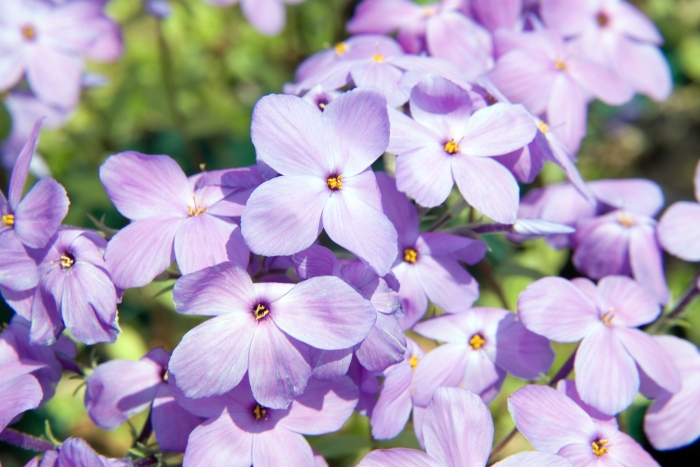Creeping Phlox
(Phlox stolonifera)
Creeping Phlox (Phlox stolonifera)
/
/

Photo by David J. Stang
CC BY-SA 4.0
Image By:
Photo by David J. Stang
Recorded By:
Copyright:
CC BY-SA 4.0
Copyright Notice:
Photo by: Photo by David J. Stang | License Type: CC BY-SA 4.0 | License URL: https://creativecommons.org/licenses/by-sa/4.0 | Uploader: David Stang | Publisher: Wikimedia Commons | Title: Phlox_stolonifera_Sherwood_Purple_9zz.jpg | Notes: {{Information |Description=Sitka Spruce ''[[Picea sitchensis]]'', Port Orford Heads, Oregon |Source=[http://www.flickr.com/photos/jamidwyer/4224276770/ Port Orford Heads] |Date=2009-03-22 14:00 |Author=[http://www.flickr.com/people/7428























































Estimated Native Range
Summary
Phlox stolonifera, commonly known as Creeping Phlox, is an evergreen perennial herb native to rich deciduous woodlands and along stream banks in the Appalachian region fo the USA. It thrives in the dappled shade of these habitats and is well-adapted to the humus-rich, well-drained soils found there. Creeping Phlox typically forms mats of foliage about 6 inches (15 cm) tall, spreading indefinitely to create a dense ground cover. Its flowers are pale purple, pink, or white, measuring 2–2.5 cm (0.79–0.98 in) in diameter, with a five-lobed corolla and contrasting yellow stamens, blooming profusely in spring and creating a carpet of color.
This plant is valued for its vibrant spring flowers and its ability to form a lush ground cover, which can help prevent soil erosion. It is often used in rock gardens, border fronts, and woodland gardens. Creeping Phlox requires consistently moist soil, especially during the growing season, and benefits from light shade, although it can tolerate full sun in cooler climates. It is generally pest-free but can suffer from foliar diseases in humid conditions. To maintain its appearance, occasional division every few years is recommended to rejuvenate growth.CC BY-SA 4.0
This plant is valued for its vibrant spring flowers and its ability to form a lush ground cover, which can help prevent soil erosion. It is often used in rock gardens, border fronts, and woodland gardens. Creeping Phlox requires consistently moist soil, especially during the growing season, and benefits from light shade, although it can tolerate full sun in cooler climates. It is generally pest-free but can suffer from foliar diseases in humid conditions. To maintain its appearance, occasional division every few years is recommended to rejuvenate growth.CC BY-SA 4.0
Plant Description
- Plant Type: Herb
- Height: 0.5-1 feet
- Width: 0.8-1.5 feet
- Growth Rate: Moderate
- Flower Color: Pink, Purple, White
- Flowering Season: Spring
- Leaf Retention: Evergreen
Growth Requirements
- Sun: Full Sun, Part Shade
- Water: Medium
- Drainage: Slow, Medium, Fast
Common Uses
Bank Stabilization, Bee Garden, Bird Garden, Border Plant, Butterfly Garden, Deer Resistant, Drought Tolerant, Erosion Control, Fragrant, Groundcover, Hummingbird Garden, Low Maintenance, Potted Plant, Rabbit Resistant, Rock Garden, Showy Flowers, Street Planting
Natural Habitat
native to rich deciduous woodlands and along stream banks in the Appalachian region fo the USA
Other Names
Common Names: Moss Phlox, Star Rock Phlox, Krypflox
Scientific Names: , Phlox stolonifera, Phlox reptans, Phlox stolonifera var. crassifolia, Armeria reptans, Phlox crassifolia, Phlox obovata, Phlox prostrata, Phlox stolonifera f. violacea,
GBIF Accepted Name: Phlox stolonifera Sims